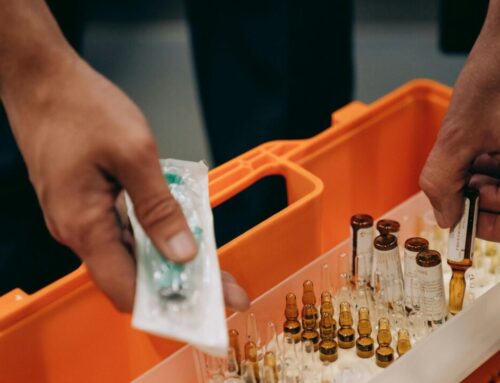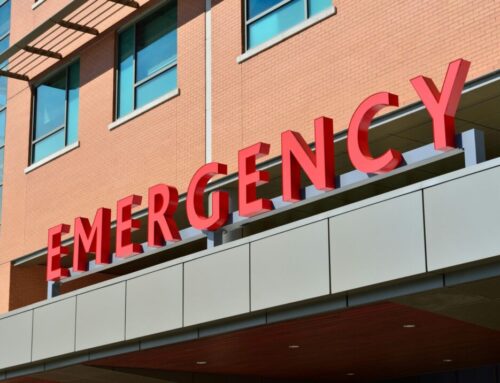Consumers are paying attention and doing their homework when it comes to shopping sustainably, and food shopping is no exception. Some grocery retailers have been taking steps to show they are “going green”, by providing reusable bags, bulk buying options, organic options, and more, but what about food delivery? In a recent survey, 40% of consumers would like to see more environmentally friendly delivery options and believe they will have a positive impact on the environment. Retailers can’t just talk the talk, now they must walk the walk. Follow these four tips to go green with your food delivery service.
Consider Route Optimization Software
Eco-friendly, electric vehicles would be nice, but not on your wallet. They require a large upfront investment that not every organization is willing to make or can see the benefits just yet. Fortunately, there are other ways to cut down on the carbon emissions that your fleet puts off, like adjusting some of your driver’s habits and optimizing their routes. Some drivers may feel pressed for time, trying to meet delivery quotas and timelines, causing them to start and keep bad habits that could hurt the environment. Some examples are laying on the gas to reach destinations faster, idling while running a package to the door, taking the most familiar route instead of the most efficient, or prioritizing large package loads to meet quotas.
By rethinking this process, and leaning on data from route optimization software, companies can cut back on carbon emissions through simple tweaks like decreasing a driver’s delivery range, eliminating quotas to discourage rushed delivery, planning more efficient routes, considering weather delays, roadblocks, and more. If drivers are assigned delivery and pickup locations and routes based on the data, this can help both the environment and your bottom line.
Ship Locally
Most items must travel from the farm or factory to a warehouse to a distribution center or physical store—and each leg of the trip requires greenhouse gas–emitting transportation. Transportation is the largest contributor to greenhouse gas emissions at 29%. For individual deliveries, it is more energy efficient to have groceries stored at a local store for shipping, rather than a larger, regional warehouse, because it will cut down on delivery miles and delivery time, leaving happier customers. This is especially true for refrigerated foods because cooling methods exacerbate the contributions to greenhouse gas emissions.
Invest in Sustainable Packaging
Delivery packaging plays a large role in polluting our world. Plastic packaging solutions don’t decompose, but instead, break down into microplastics, which are toxic chemicals responsible for air and marine pollution. Cardboard packaging is an eco-friendly alternative but comes with a few of its own negatives, such as cutting down our forests to create the packaging, filling landfills when finished with the packaging, and greenhouse gas emissions when the packaging decomposes.
When shipping refrigerated or frozen contents, these boxes are packed with dry ice which is an ongoing cost to the organization as it can’t be reused. Alternatives to dry ice are using refrigerated trucks or diesel-powered auxiliary transport refrigeration units (auxTRUs). Most of what is used worldwide are diesel-powered trucks with an additional refrigeration unit powered by diesel or using the engine to power the coolers. Not only are operating and maintenance costs higher for these types of fleets, but they also are large contributors to greenhouse gasses and local air pollution because of their long idling times. Studies have found that these systems contribute an additional 1-2% of greenhouse gas emissions.
Fortunately, alternative green packaging is being more widely produced, generating less waste. When combined with phase change material (PCM) freezer packs you can ship refrigerated and frozen foods. Toss the cardboard boxes and invest in non-hazardous, non-toxic, and reusable thermal packaging with a multi-year shelf life. In a closed-loop system, this packaging can save on costs and reduce waste, as it can be used and reused. For cold and frozen food deliveries, ditch the dry ice that instantly emits greenhouse gases into the atmosphere as soon as it is created and only can be used once. Alternatively, Phase Change Material (PCM) freezer packs are made from food-grade high-density polyethylene (HDPE) plastic made of recycled materials, that are durable and keep contents from leaking. This combination of thermal packaging and PCM freezer packs can be reused over 1,000 times, keeping them out of landfills and keeping more money in your wallet.
Reassess Processes for Closed Loop Delivery
Cost efficient and environmentally friendly reusable packaging can only truly work in a closed-loop delivery system. Implementing a closed-loop delivery system enables companies to reuse the materials and packaging that products are shipped in, but also the refrigerant. Not only is this good for the environment, but eliminates the cost to reproduce packaging and dry ice, helping your bottom line.




